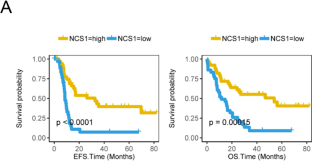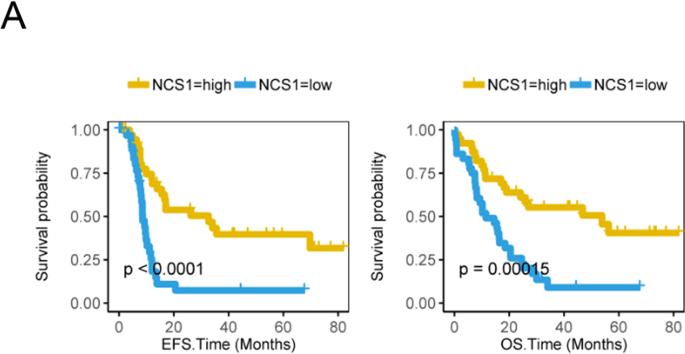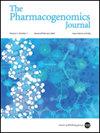神经元钙传感器 1 的表达水平可预测细胞遗传正常的急性髓细胞性白血病的预后
IF 2.9
3区 医学
Q2 GENETICS & HEREDITY
引用次数: 0
摘要
急性髓性白血病(AML)是一种具有高度异质性的髓样小体恶性克隆扩增,目前已发现许多分子生物标志物可用于判断某些特定分类的急性髓性白血病的预后。此外,对于细胞遗传学正常的急性髓性白血病(CN-AML)患者,我们需要找到更多新的生物标志物来预测患者的预后。最近,神经元钙传感器 1(NCS1)的表达水平与乳腺癌和肝细胞癌的预后有关,但与血液恶性肿瘤相关的研究却鲜有报道。因此,我们进行了这项研究,探讨 NCS1 表达水平与 CN-AML 之间的关系。我们通过癌症基因组图谱(TCGA)数据库中的 75 例 CN-AML 患者和基因表达总库(GEO)数据库中的 433 例 CN-AML 患者(3 个独立数据集)分析了生存与 NCS1 RNA 表达之间的关系。此外,我们还比较了GSE76004数据集中78名AML患者的138份白血病干细胞阳性(LSCs+)样本和89份白血病干细胞阴性(LSCs-)样本的NCS1 RNA表达。在我们的研究中,NCS1表达水平高的CN-AML患者的EFS或OS更长。此外,NCS1在白血病干细胞中的表达水平较低(p = 0.00039)。根据这些发现,我们得出结论:NCS1的高表达可预测CN-AML患者的良好预后。此外,我们的研究还提出,NCS1在LSCs+中表达较低,这可能是解释急性髓细胞性白血病侵袭性的一个重要机制。本文章由计算机程序翻译,如有差异,请以英文原文为准。


The expression level of Neuronal Calcium Sensor 1 can predict the prognosis of cytogenetically normal AML
Acute myeloid leukemia (AML) is malignant clonal expansion of myeloid blasts with high heterogeneity and numerous molecular biomarkers have been found to judge the prognosis in some specific classifications of AML. Furthermore, as for patients with cytogenetically normal acute myeloid leukemia (CN-AML), we need to find more new biomarkers to predict the patients’ outcomes. Recently, the expression level of Neuronal Calcium Sensor 1 (NCS1) has been associated with the prognosis of breast cancer and hepatocellular carcinoma, but nothing related has been reported about hematological malignancies. Therefore, we make this study to explore the relationship between the NCS1 expression level and CN-AML. We analyzed the relation between survival and NCS1 RNA expression through 75 CN-AML patients from Cancer Genome Atlas (TCGA) database and 433 CN-AML patients (3 independent datasets) from Gene Expression Omnibus (GEO) database. Additionally, we compared the NCS1 RNA expression between 138 leukemia stem cells positive (LSCs+) samples and 89 leukemia stem cells negative (LSCs−) samples from 78 AML patients from GSE76004 dataset. In our study, CN-AML patients with high expression level of NCS1 have longer EFS or OS. In addition, the NCS1 expression level in leukemia stem cells was low (p = 0.00039). According to these findings, we concluded that the high expression of NCS1 can predict favorable prognosis in CN-AML patients. Furthermore, our work put forward that NCS1 expresses lower in LSCs+, which might be an important mechanism to explain the aggressiveness of AML.
求助全文
通过发布文献求助,成功后即可免费获取论文全文。
去求助
来源期刊

Pharmacogenomics Journal
医学-药学
CiteScore
7.20
自引率
0.00%
发文量
35
审稿时长
6-12 weeks
期刊介绍:
The Pharmacogenomics Journal is a print and electronic journal, which is dedicated to the rapid publication of original research on pharmacogenomics and its clinical applications.
Key areas of coverage include:
Personalized medicine
Effects of genetic variability on drug toxicity and efficacy
Identification and functional characterization of polymorphisms relevant to drug action
Pharmacodynamic and pharmacokinetic variations and drug efficacy
Integration of new developments in the genome project and proteomics into clinical medicine, pharmacology, and therapeutics
Clinical applications of genomic science
Identification of novel genomic targets for drug development
Potential benefits of pharmacogenomics.
 求助内容:
求助内容: 应助结果提醒方式:
应助结果提醒方式:


